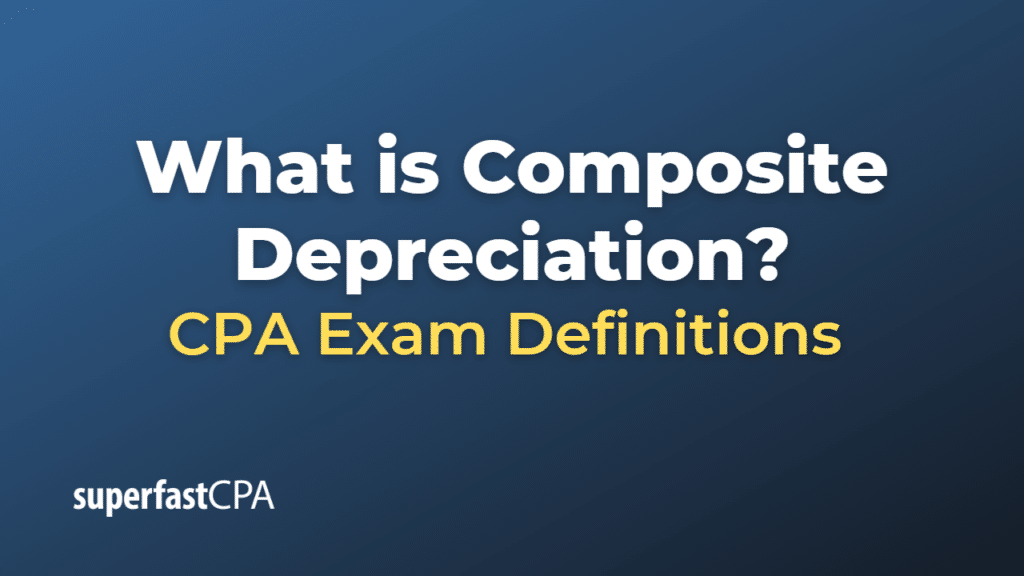Composite Depreciation
Composite Depreciation is an accounting method used to calculate the depreciation expense for a group of related assets as a single unit, rather than depreciating each asset individually. This method is typically applied to assets that have a similar nature, function, or lifespan, and are collectively significant to the organization’s operations. Composite Depreciation simplifies the process of tracking and recording depreciation expenses, making it easier to manage a large number of assets.
To calculate composite depreciation, the following steps are taken:
- Determine the total cost of the group of assets: This includes the initial purchase price or construction cost of each asset in the group, plus any additional costs required to get the assets ready for use, such as installation, transportation, and testing.
- Determine the total accumulated depreciation of the group of assets: This is the total depreciation expense that has been recorded for the group of assets up to the current accounting period.
- Calculate the composite depreciation rate: The composite depreciation rate is the average rate at which the group of assets is depreciated. It is calculated by dividing the total depreciation expense for the group of assets by the total cost of the group.
- Apply the composite depreciation rate: The composite depreciation rate is applied to the total cost of the group of assets to determine the annual composite depreciation expense.
When an asset within the group is sold, retired, or otherwise disposed of, the difference between the asset’s net book value (original cost minus accumulated depreciation) and the proceeds from the disposal is recorded as a gain or loss. However, no adjustments are made to the composite depreciation rate or the remaining assets’ depreciation expense.
It’s important to note that composite depreciation is less precise than calculating depreciation for each individual asset, as it assumes that all assets in the group have the same useful life and depreciation pattern. This method may not accurately reflect the actual depreciation of individual assets, but it can provide a reasonable estimate for the group as a whole and simplify the accounting process.
Example of Composite Depreciation
Let’s consider a hypothetical example of a company, OfficeCo, that has purchased various office equipment and decided to use the Composite Depreciation method to simplify the depreciation process. Here’s a list of the office equipment and their respective costs and useful lives:
- Computers: $10,000 (useful life: 5 years)
- Printers: $5,000 (useful life: 4 years)
- Office furniture: $15,000 (useful life: 10 years)
To calculate the composite depreciation, we need to follow these steps:
Step 1: Determine the total cost of the group of assets:
Total cost = $10,000 (Computers) + $5,000 (Printers) + $15,000 (Office furniture) = $30,000
Step 2: Determine the total annual depreciation for each asset category:
Computers: $10,000 / 5 years = $2,000 per year
Printers: $5,000 / 4 years = $1,250 per year
Office furniture: $15,000 / 10 years = $1,500 per year
Step 3: Calculate the composite depreciation rate:
Total annual depreciation = $2,000 (Computers) + $1,250 (Printers) + $1,500 (Office furniture) = $4,750
Composite Depreciation Rate = Total annual depreciation / Total cost
Composite Depreciation Rate = $4,750 / $30,000 = 0.1583 or 15.83%
Step 4: Apply the composite depreciation rate:
Annual composite depreciation expense = Total cost * Composite Depreciation Rate
Annual composite depreciation expense = $30,000 * 15.83% = $4,750
Using the Composite Depreciation method, OfficeCo would record an annual depreciation expense of $4,750 for the entire group of assets. Note that this method simplifies the depreciation process, but it may not accurately reflect the actual depreciation of each individual asset. In this example, all assets are depreciated at the same rate, even though their useful lives are different.













